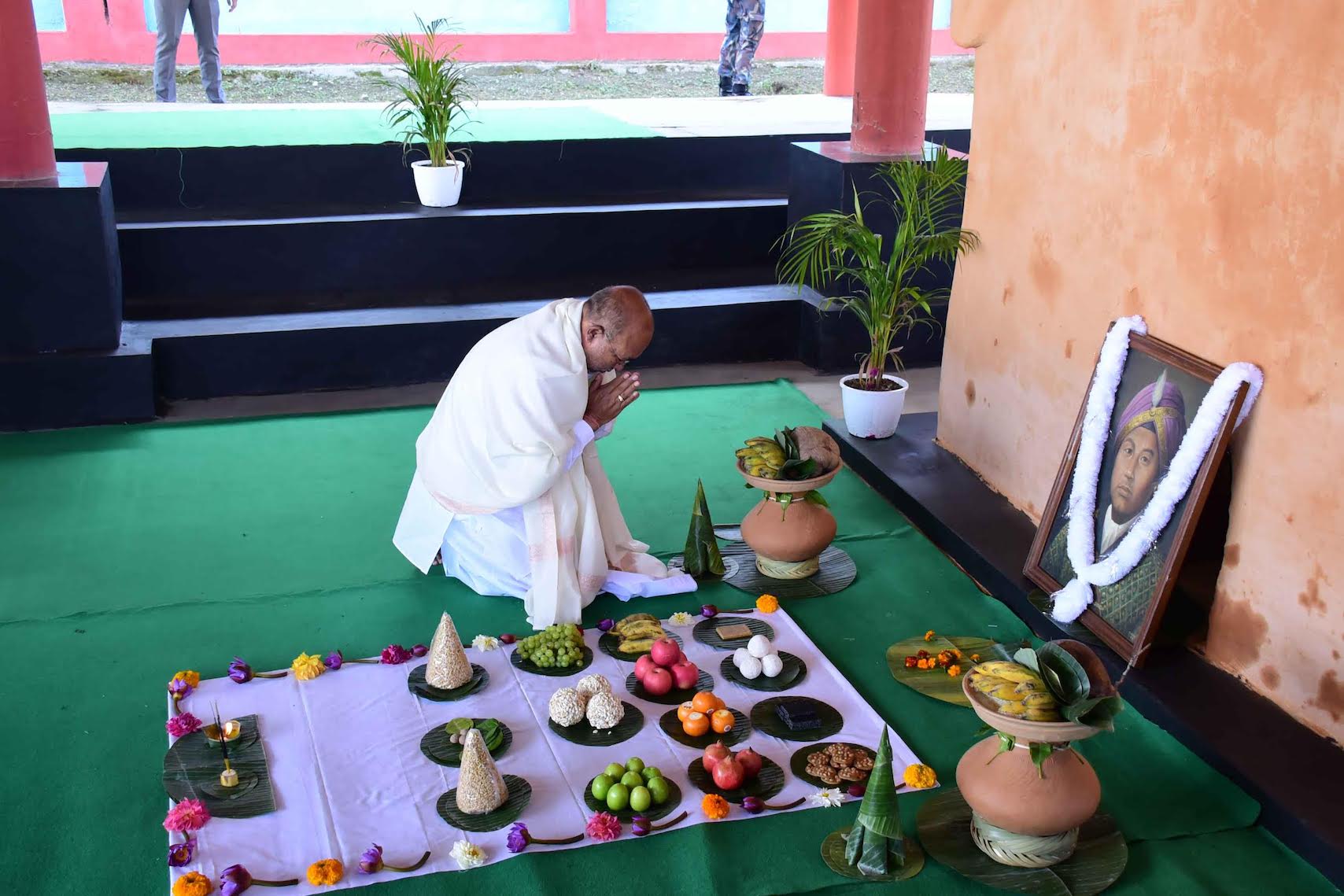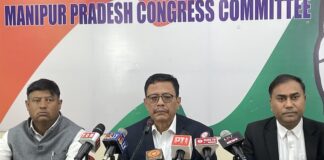Manipur was fortunate to have two great princes during the great national liberation struggle from the Burmese reign of terror, which is known as the “Chahi Taret Khuntakpa” (Seven Years’ Devastation, 1819–1825) in the history of Manipur. One was Maharaja Gambhir Singh (1825–1834), and the other was Maharaja Nara Singh (1844-1850). Both of them were descendants of the great King Garibniwaz.
When Maharaja Marjit Singh occupied the throne of Manipur with the help of Burmese in 1813, Chourajit Singh fled to Cachar. Gambhir Singh and his elder brother followed Maharaja Chourajit Singh to Cachar and took shelter at the court of Govind Chandra. Raja Govind Chandra appointed Gambhir Singh as the commander-in-chief of the army of the Cachar kingdom. Gambhir Singh extended his support to the Cachari Raja. But he came to know the clear picture of the Raja, his unpopularity, weakness, and cruelty. He waited for an opportunity.
Gambhir Singh remained a prince in search of a kingdom. He was a determined and brave prince who had faith in his own destiny. The opportunity came in 1817 when Marjit Singh invaded Cachar on the pretext of taking revenge on Raja Govind Chandra, who insulted him some years ago and confiscated his beautiful pony. The real cause was the conquest of Cachar, where the Manipuri princes were taking refuge. Govind Chandra requested Chourjit Singh and Gambhir Singh for military assistance on the promise that they would be granted lands for habitation. When the invading Manipur armies heard about this, they refused to fight and retreated. Later on, the two Manipuri princes established themselves in Cachar. Govind Chandra fled to Sylhet and sought British help, which was declined.
In 1819, a large Burmese army under General Maha Bandula invaded Manipur. It was a time of growing Burmese power under Bagyidaw, the seventh king of the Konbaung dynasty of Burma. Marjit Singh was defeated and fled to Cachar, where he surrendered the authority of Manipur. Chourajit Singh forgave his brother and distributed the confiscated lands. Chourajit Singh ruled Sonaimukh, Marjit Singh ruled Hailakandi, and Gambhir Singh ruled the rest of Cachar.
By June 1823, the Burmese had become more aggressive, and they reconquered Assam. Burma had completely controlled Assam. The political situation turned the northeastern frontier into a military conflict between Burma and Britain. The British were searching for an ally among the Manipur princes who could help them drive away the Burmese. They decided to enlist the help of the more assertive Gambhir Singh in the eventual liberation of Manipur from Burmese rule.
On January 15, 1824, the Burmese forces invaded Cachar from three) sides: the first column from Nowgong, the second from Jaintia, and the third from Manipur. The British, helped by Gambhir Singh and Nara Singh, fought back against the Burmese force.
On March 5, 1824, the first Anglo-Burmese war was declared, and hostilities between Burma and the British existed. The British decided that Gambhir Singh be chosen as the ally of the British to drive away the Burmese from Manipur. On April 20, 1824, Gambhir Singh was informed that Manipur would be given to him if he could conquer Manipur from Burmese forces. Gambhir Singh was to build up a military force of 500 Manipuri soldiers. The Levy was to be equipped, paid, and disciplined by the British officers, but it was under the command of Gambhir Singh himself. It was named Raja Gambhir Singh Levy. He was given the title of Raja. Nar Singh and Gambhir Singh became partners in the fight against Burma.
By October 1824, all the Burmese were cleared of Cachar. They concentrated in Manipur and the Kabaw Valley. Brigadier Suldham was appointed by the British in January 1825 to lead the invasion of Manipur and upper Burma. On reaching Baskandi on February 24, 1825, Suldham realised the impracticability of building the road to Manipur.
After the withdrawal of Suldham’s army, Gambhir Singh proposed to liberate Manipur with his levy of 500 soldiers. Permission was granted to the Levy to march to Manipur. Lt. RB Pemberton of the Native Light Infantry volunteered to accompany the levy as he was interested in the survey operation to obtain precise information regarding the different passes, the resources, and the strength of the Burmese forces.
Gambhir Singh and Lt. Pemberton, accompanied by Nara Singh, left Sylhet on May 17th, 1825, on their march toward Manipur. They reached Baskandi and proceeded through the Western Hills of Manipur through the Akhui route. The force advanced through constant rain as it was monsoon season and suffered all sorts of hardships without the slightest complaint as they were patriotic soldiers determined to liberate their motherland. They were inspired and spirited soldiers under the inspiring leadership of Gambhir Singh. On June 10, 1825, the Levy appeared on the western edge of Manipur Valley and encountered the Burmese forces at Maklang, a small village 12 miles west of the capital. After a hard battle with the Burmese forces stationed at the Manipur palace, Gambhir Singh gained the victory, and the Burmese fled.
On June 11, the Burmese evacuated the capital and halted at Andro. Gambhir Singh proceeded to Andro; but on the way, it was learned that the Burmese had deserted Andro and left Manipur. Gambhir Singh, after the occupation of the capital, formally ascended the throne of Manipur.
Maharaja Gambhir Singh was a great liberator who emerged as a national hero at the hour of the greatest crisis in the history of Manipur. Bagyidaw (1819–1837), the defeated Burmese emperor, reluctantly called him “The Ruler” of Manipur. By virtue of his courage, gallantry, and military expertise, no ruler in Manipur’s history has been given such an exalted international personality of a recognised and reconquered kingdom and its ruler as Maharaja Gambhir Singh. His political wisdom, his gallantry, and his undaunted patriotism had won him the goodwill of all concerned, including the social support of his countrymen. He was socially and politically supported by the courageous and popular Senapati Nar Singh.
In January 1834, Kabaw Valley was handed over to the Burmese. Hearing the bad news of the impending transfer of Kabaw Valley, Maharaja Gambhir Singh died on January 9th, 1834, due to a heart attack.
Maharaja Gambhir Singh initially constructed his palace at Lamangdong (Bishnupur). Later, he shifted his palace to Langthaban (Canchipur). He also constructed Oinam Market near Nambol. He also constructed temples, royal residences, and magnificent gateways, and he dug several tanks at Langthabal. During his reign, the boundary of Manipur extended up to Thibomei (presently Kohima), as evidenced by the stone inscription at Kohima, which was erected by him.


